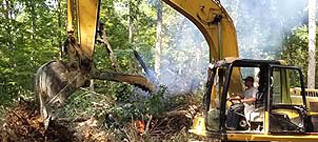Reused Oyster Shells Will be Used for Natural Habitats, Oyster Repopulation
ANNAPOLIS (March 25, 2010)--The Oyster Recovery Partnership launched Maryland’s first Oyster Shell Recycling Alliance today in Baltimore, together with more than 20 restaurants, catering companies and seafood wholesalers, the regional oyster shucking community and volunteers. The Alliance will focus on collecting used oyster and clam shells from restaurants and caterers in the Baltimore/Annapolis/Washington, DC metro area.
“This initiative is not only the first of its kind in Maryland, it is special because it all began with volunteers from the oyster shucking community who care deeply about our Bay,” said Stephan Abel, Executive Director of Oyster Recovery Partnership. “This community has a culture and a historical significance all their own. Their foresight and leadership made this Alliance happen.”
Oyster shell is a limited resource that needs to be recycled. Reused oyster shell provides crucial natural habitat for new oysters in the Chesapeake Bay and is used exclusively by the University of Maryland Center for Environmental Science Horn Point hatchery for its oyster setting process.
Local oyster shuckers, watermen and Oyster Recovery Partnership staff are conducting ongoing pickups delivered to three dumpsters in the region. The shell are then transported via Oyster Recovery Partnership vehicles and deposited to the University of Maryland Center for Environmental Science (UMCES) Horn Point Lab Hatchery in Cambridge, MD for aging. About one year after collection, the hatchery attaches small oysters (“spat”) to the shells and they are replanted into the Bay on strategically-designated areas by the Oyster Recovery Partnership in cooperation with our many partners including the UMCES, Department of Natural Resources (DNR), National Oceanic and Atmospheric Administration (NOAA), Army Corp of Engineers, University of Maryland, Maryland Watermen Association and Chesapeake Bay Foundation.
Over the last 18 months, the pilot program collected more than 3,000 bushels or 1.5 million shells from local catering companies and on-call pickups. The successful pilot immediately attracted 20 high-profile restaurants and caterers who are now official Alliance partners. The goal is to expand the collection points across Maryland and Washington, DC. It is estimated that approximately 15 million new oysters planted be planted back into the Chesapeake Bay as a result of this initiative thus far.
“We believe we can collect about 5,000 bushels in our first Alliance year, enough shell to provide substrate for 25 million spat on shell,” said Vernon Johnson, a nationally-recognized oyster shucking competitor and Alliance volunteer. “Whether it’s one oyster or one million, every oyster shell makes a difference.”
The Alliance’s 2010 Season is sponsored by a generous donation by Maryland citizen Doug Legum and matching grant funds provided by DNR and NOAA. Oyster Recovery Partnership is currently seeking a 2011 Season sponsor.
“The Chesapeake Bay is not only an economic engine for the state of Maryland with an estimated value of over seventy billion dollars, it is a God-given gift which we have an obligation to protect. At the bottom are the oysters, filtering the water,” said Doug Legum.
Only a handful of other States currently have shell collection programs, including South Carolina and New Hampshire. Each state has customized their shell collection process to take advantage of the local oyster consumption habits. In the case of Maryland, a majority of shells are generated from catered events like Bull and Oyster Roasts.
“Recycled shell is a limited resource and a critical element in the State’s oyster restoration efforts,” said Abel. “In 2009, ORP processed, cleaned and transported 60,000 bushels of shell that was in turn used to plant more than 650 million baby oysters back to the Bay.”
Why Oysters?
Over the last century, the Chesapeake Bay has seen a dramatic decline of its native oyster population. A healthy oyster reef not only filters the Bay’s dirty waters, but also provides crucial habitat for an underwater community that furnishes valuable life support for blue crabs and fish.
Restaurant Program Specifics
Oyster shells are collected into 5 gallon containers with lids. Full containers, free of trash, should be assessable for easy pick-up. We request a weekly minimum of 5 containers to be a participant for regular pickup. Individual citizen participation is also encouraged. There are several places in Maryland to drop used oyster shell. Visit
www.oysterrecovery.org to learn more. If you are interested in participating,
you can sign up on the website or contact Bryan Gomes on 410.990.4970.


